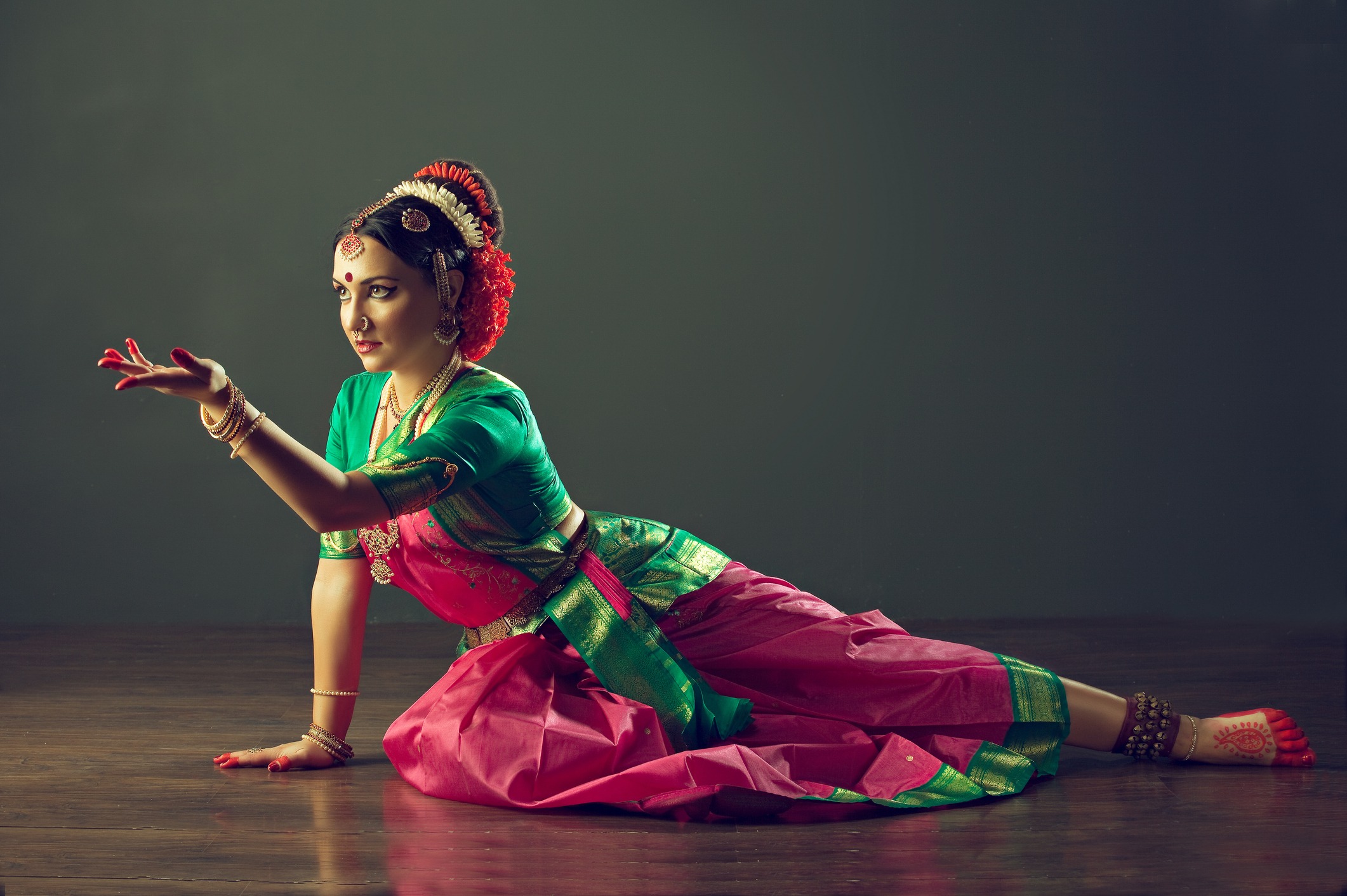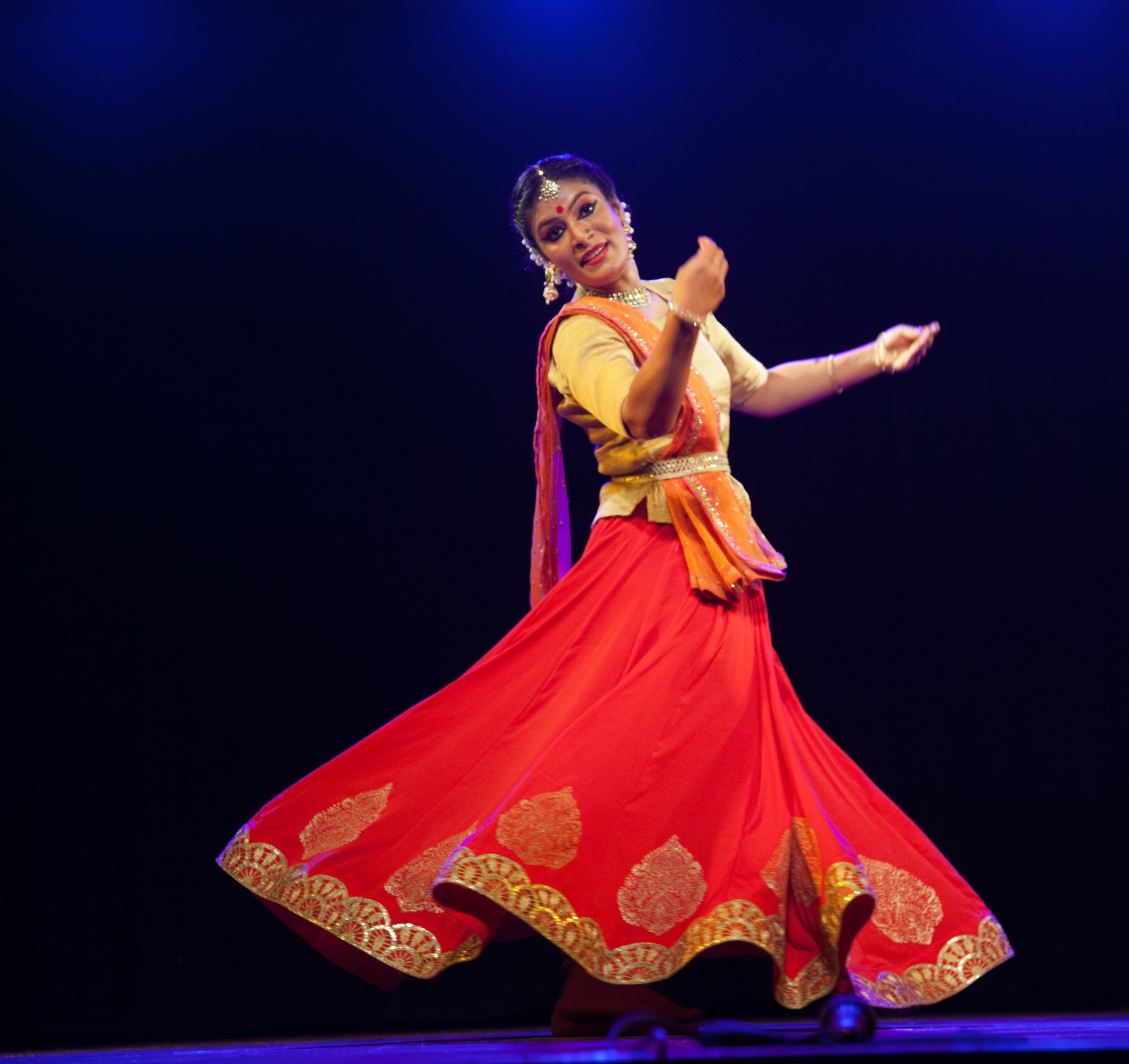Kuchipudi, a classical dance form originating from the Indian state of Andhra Pradesh, is a captivating blend of tradition, rhythm, and expression. It stands as a testament to the rich cultural tapestry of Andhra Pradesh, a region renowned for its diverse artistic heritage. This dance form, originating from the village of Kuchipudi, has evolved from a village theater tradition to a classical style celebrated for its elegance, expressiveness, and dynamic storytelling.
Andhra Pradesh is a Land Steeped in Cultural Richness
Andhra Pradesh, located in the southeastern part of India, is a region steeped in history and culture. It is bordered by Telangana, Karnataka, Tamil Nadu, Odisha, and the Bay of Bengal, making it a melting pot of various cultural influences. The state is known for its picturesque landscapes, ancient temples, rich history, and vibrant cultural arts, of which Kuchipudi is a shining example.
Historical and Cultural Background – The region’s history dates back to the Vedic period, and it has been ruled by various dynasties, each leaving an indelible mark on its culture and traditions. The Satavahanas, Chalukyas, Kakatiyas, and the famous Vijayanagara Empire have all contributed to the rich cultural heritage of Andhra Pradesh.
Artistic Traditions – Apart from Kuchipudi, Andhra Pradesh is known for its varied art forms like Kathakali, Bharatanatyam, and folk dances. The state is also famous for its distinct styles of music, painting, and literature, further enriching India’s cultural diversity.
Crafts and Handlooms – Andhra Pradesh is renowned for its exquisite handlooms and crafts. The rich weaves of Kalamkari, Venkatagiri, Uppada, and Mangalagiri sarees showcase the intricate craftsmanship of the region.
Telugu Language – Telugu is the classical language of Andhra Pradesh, is renowned for its rich linguistic heritage and is the largest member of the Dravidian language family. Spoken by millions in Andhra Pradesh and Telangana, it’s known for its mellifluous tone and a script that’s highly phonetic. The language’s history is deeply intertwined with the region’s cultural and dynastic shifts, notably influenced by great empires like the Vijayanagara. Telugu’s literary tradition is illustrious, featuring extensive poetry, drama, and philosophical works, significantly contributing to the cultural fabric of Andhra Pradesh. This language not only serves as a crucial medium of everyday communication but also as a vibrant vessel of the region’s historical, artistic, and intellectual expressions.
The Evolution of Kuchipudi in Andhra Pradesh
Kuchipudi holds a special place in the hearts of the people of Andhra Pradesh. It evolved from the Bhagavata Mela tradition, a form of dance-drama, into a distinct classical dance form under the influence of great practitioners like Siddhendra Yogi in the 17th century.
From Temple Rituals to Global Stages – Kuchipudi, a classical dance form synonymous with the Indian state of Andhra Pradesh, has undergone a remarkable evolution, from its origins as a temple dance to its current status as a globally recognized art form. This journey mirrors the cultural and historical transformations of Andhra Pradesh itself.
Ancient Beginnings and Religious Roots – Kuchipudi’s earliest form was deeply intertwined with religious practices and rituals. Originating as a part of the Bhagavata Mela tradition, it was performed exclusively by male Brahmin dancers. These performances, which were both devotional and entertaining, typically took place in temple courtyards and were a part of religious festivals.
The Kuchipudi Village and Siddhendra Yogi’s Influence – The village of Kuchipudi, in the Krishna district, played a pivotal role in giving the dance its identity and name. Siddhendra Yogi, a 17th-century saint, and dancer, is often credited with formalizing Kuchipudi. He envisioned it as a distinct art form and composed the ‘Bhama Kalapam’, focusing on Satyabhama, a character from Hindu mythology. This marked a turning point, as Kuchipudi began to evolve into a classical dance form with a structured repertoire.
Transition from Male-Only Tradition to Inclusivity – Historically, Kuchipudi was performed only by men, who often portrayed female roles. However, in the 20th century, this tradition changed, and women began to learn and perform Kuchipudi, enriching the dance form with their grace and interpretations. This shift not only broadened the scope of Kuchipudi but also made it more accessible and popular.
Influence of Socio-Cultural Changes – Over time, as Andhra Pradesh underwent various socio-political changes, so did Kuchipudi. The dance form absorbed influences from different rulers and cultures, yet it retained its unique character and techniques. The freedom movement in India and the subsequent revival of Indian arts and culture also played a significant role in the resurgence and popularization of Kuchipudi.
From Temples to Theatres and Beyond – The transition of Kuchipudi from a temple ritual to a theatrical performance was significant. It began to be staged in urban theaters and later, international platforms. This transition was crucial for its survival and growth, as it reached a wider audience and gained patronage beyond religious contexts.
Modern Innovations and Global Recognition – In recent times, Kuchipudi has seen numerous innovations. Artists have experimented with new themes, music, and choreography while preserving its traditional essence. The establishment of Kuchipudi dance schools and academies in Andhra Pradesh and beyond has played a crucial role in disseminating this art form.
The evolution of Kuchipudi in Andhra Pradesh is a fascinating saga of resilience, adaptability, and artistic excellence. From its humble beginnings in a small village to its stature as a celebrated global dance form, Kuchipudi has remained a jewel in the crown of Andhra Pradesh’s cultural legacy. It continues to evolve, inspire, and enthrall audiences worldwide, symbolizing the rich cultural heritage of its land of origin.
Kuchipudi Today: An Emblem of Andhra’s Artistic Legacy
Kuchipudi is not just an art form but a living legacy of Andhra Pradesh. It carries with it the stories, emotions, and artistic expressions of its place of origin, while simultaneously reaching out to touch global audiences. As an emblem of Andhra’s artistic legacy, Kuchipudi continues to be a vibrant and vital part of the cultural landscape, a dance form that embodies the spirit of creativity, tradition, and cultural pride.
In the contemporary era, Kuchipudi transcends the boundaries of Andhra Pradesh, gaining prominence both in India and across the globe. Yet, it remains deeply rooted in the traditions and cultural ethos of its birthplace. This dance form not only represents the artistic soul of Andhra Pradesh but also showcases the region’s capacity to evolve while preserving its heritage.
Preservation and Innovation
Numerous dance academies in Andhra Pradesh, and other parts of India, continue to teach and propagate Kuchipudi. These institutions are not just centers for learning the dance form; they are repositories of cultural heritage, passing down centuries-old traditions to new generations.
The Government of Andhra Pradesh actively promotes Kuchipudi through festivals and cultural events. These events not only celebrate the dance form but also provide a platform for artists to showcase their talent and for enthusiasts to experience the rich tapestry of Andhra’s culture.
Contemporary Kuchipudi artists have introduced innovative concepts while maintaining the integrity of the traditional form. These innovations include thematic solo performances, fusion with other dance styles, and the portrayal of contemporary issues through the classical dance vocabulary.
Global Recognition and Cultural Exchange
Kuchipudi has a growing international following, with schools and performances in countries like the USA, UK, Canada, and Australia. This global presence has led to a cultural exchange, enriching the dance form with new perspectives and audiences.
Artists from various parts of the world collaborate with Kuchipudi dancers, creating a fusion of styles that resonates with a global audience. These collaborations have opened new avenues for the dance form, blending traditional elements with contemporary themes.
Cultural Identity and Community
For the people of Andhra Pradesh, Kuchipudi is more than a dance form; it is a symbol of their cultural identity. It reflects the region’s history, its artistic achievements, and its spiritual beliefs.
Kuchipudi performances are integral to many community and social events in Andhra Pradesh. They are a medium of storytelling, a form of worship, and a way of preserving and celebrating cultural narratives.
The Future of Kuchipudi
The future of Kuchipudi looks promising, as it continues to adapt and thrive in the modern world. Efforts to preserve its traditional form while embracing innovation ensure that Kuchipudi remains relevant and appealing to new generations. It stands as a dynamic and living art form, constantly evolving and growing, yet firmly anchored in the rich soil of Andhra Pradesh’s cultural heritage.
Conclusion
Kuchipudi is more than just a dance form; it is a celebration of the rich cultural heritage of Andhra Pradesh. As it continues to captivate audiences worldwide, Kuchipudi not only preserves the artistic traditions of its homeland but also serves as a bridge connecting the past with the present, and the local with the global. Its enduring charm and vitality are a tribute to the timeless legacy of Andhra Pradesh’s art and culture.



